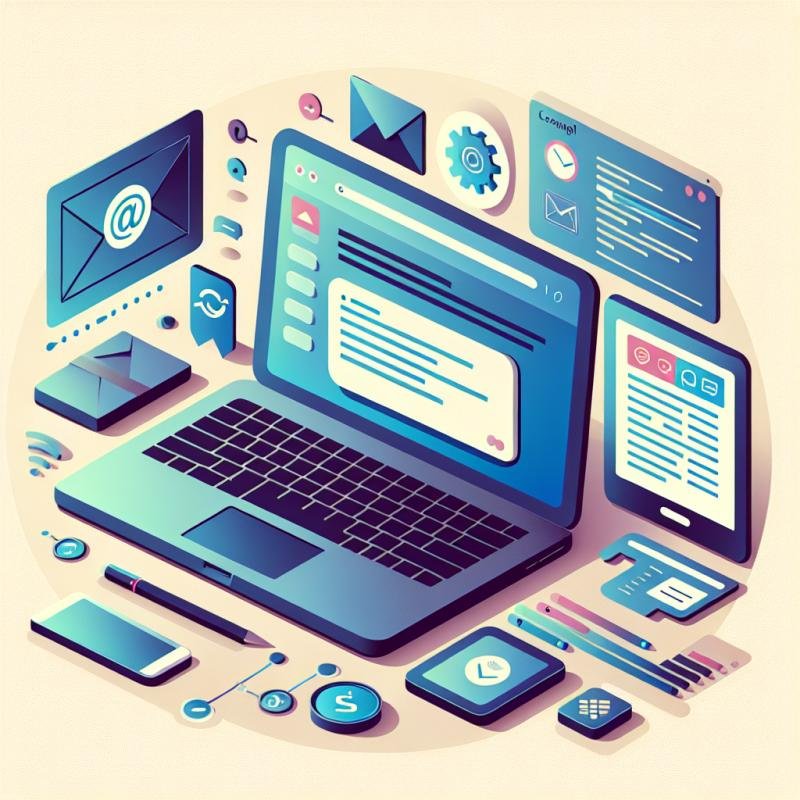In today’s fast-paced business environment, manually sending emails and generating invoices can be time-consuming and prone to errors. Automating these essential tasks with Laravel not only saves time but also ensures accuracy, professionalism, and consistency. This guide will walk you through mastering email and invoice automation using Laravel, complete with practical examples, best practices, and actionable insights to help you streamline your operations.
Why Automate Email and Invoice Processes?
Businesses often struggle with repetitive tasks like sending confirmation emails or generating invoices manually, which can lead to delays and costly errors. Automating these processes with Laravel offers multiple benefits:
- ✓ Time Efficiency: Automate routine emails and invoices to free up valuable time for your team.
- ✓ Consistency: Ensure all outgoing communications and invoices maintain a professional, uniform format.
- ✓ Accuracy: Reduce human errors in invoice calculations and email content.
- ✓ Scalability: Easily handle a growing volume of clients and transactions without extra overhead.
By mastering automation in Laravel, your business can operate more smoothly and deliver better customer experiences.
Mastering Email Automation with Laravel
Laravel provides a robust and elegant way to handle email automation out of the box. Its built-in Mail facade and support for Markdown email templates make crafting automated messages simple and maintainable.
Setting Up Automated Emails
To begin automating emails, configure your mail driver in .env (e.g., SMTP, Mailgun, or SES). Then create a Mailable class:
php artisan make:mail OrderConfirmationThis class contains the logic to build your email. Using Markdown templates allows you to separate design and content, which makes updates easier.
Example: Sending Order Confirmation Emails
Here’s a simple example of sending an order confirmation email automatically when a user places an order:
use App\Mail\OrderConfirmation;
use Illuminate\Support\Facades\Mail;
public function placeOrder(Request $request) {
// Process order logic here
// Send confirmation email
Mail::to($request->user()->email)->send(new OrderConfirmation($order));
}This triggers an email right after the order is placed, improving customer communication without manual intervention.
Queued Emails for Performance
For high-volume email sending, Laravel’s queue system allows emails to be sent asynchronously, improving application responsiveness. Simply implement the ShouldQueue interface on your Mailable class and configure your queue driver.
If you want to dive deeper into enhancing your website’s visibility — which complements your automated email outreach efforts — consider reading our article on Why Your Website is Not Showing in Google Search and How to Fix It. Understanding SEO can maximize the impact of your automated emails by driving more traffic to your site.
Invoice Automation Using Laravel
Automating invoice creation and delivery can drastically reduce errors and speed up your payment cycles. Laravel’s flexibility allows integration with PDF libraries and email systems to create and send invoices effortlessly.
Generating PDF Invoices
Use packages like barryvdh/laravel-dompdf to generate PDF invoices dynamically:
use PDF;
public function generateInvoice($order) {
$pdf = PDF::loadView('invoices.template', compact('order'));
return $pdf->download('invoice_'.$order->id.'.pdf');
}This method converts an HTML invoice template into a downloadable PDF, which can then be attached to emails.
Automating Invoice Emails
Once the PDF is generated, Laravel's mail system can automatically attach and send the invoice to your customer:
Mail::to($order->user->email)->send(new InvoiceEmail($pdf));This integration ensures invoices reach customers promptly without manual handling.
Example Workflow
- Order is placed and saved to the database.
- Invoice PDF is generated based on the order details.
- Email with invoice attached is queued and sent to the customer.
- System logs the sent invoice for record-keeping.
Such automated workflows improve cash flow and reduce administrative overhead.
Considerations When Choosing Development Resources
If you’re looking to implement these automation features but unsure whether to hire in-house developers or freelancers, our article on Top 5 Reasons to Choose a Freelancer for Your Website Project: Flexibility, Expertise, and Cost-effectiveness offers valuable insights. It explains how freelancers can provide specialized skills and faster turnaround times, which is beneficial for project-focused automation implementations.
Best Practices for Email and Invoice Automation in Laravel
- ✓ Use Queues: Always queue emails and invoice generation tasks to avoid slowing down your app.
- ✓ Template Management: Use Laravel’s Markdown mailables for customizable yet maintainable email templates.
- ✓ Validation: Validate all input data thoroughly to avoid sending incorrect invoices or emails.
- ✓ Logging: Keep logs of sent emails and generated invoices for auditing and troubleshooting.
- ✓ Security: Protect sensitive customer data in emails and invoices by adhering to encryption and privacy best practices.
- ✓ Testing: Implement automated tests to verify your email and invoice workflows work reliably under different scenarios.
Conclusion
Automating your business’s email and invoice processes with Laravel is a powerful strategy to increase efficiency, ensure accuracy, and boost customer satisfaction. By leveraging Laravel’s built-in mail system, queue management, and PDF generation capabilities, you can build seamless automation workflows tailored to your business needs.
Embracing automation not only frees up your team for higher-value tasks but also enhances professionalism and scalability. As you embark on this journey, consider exploring related topics like SEO to drive traffic to your site and the advantages of hiring freelancers to accelerate your automation projects.
Frequently Asked Questions
1. Can Laravel handle sending bulk automated emails?
Yes, Laravel supports bulk email sending efficiently through its queue system, allowing you to send large volumes of emails without impacting app performance.
2. How do I ensure invoices generated with Laravel comply with tax regulations?
You should incorporate tax calculation logic based on your jurisdiction in your invoice templates and keep your software updated with the latest tax rules.
3. Is it difficult to integrate third-party email services with Laravel?
Laravel easily integrates with popular email services like Mailgun, Amazon SES, and SMTP providers through simple configuration changes, enhancing reliability and scalability.
4. What are the security considerations when automating emails and invoices?
Protect sensitive data by using TLS for emails, encrypting stored data, and ensuring access controls on invoice and email generation processes.
5. Can I customize email templates without coding?
Yes, using Laravel’s Markdown mailables or third-party packages, you can create customizable templates that non-developers can update with minimal coding.







